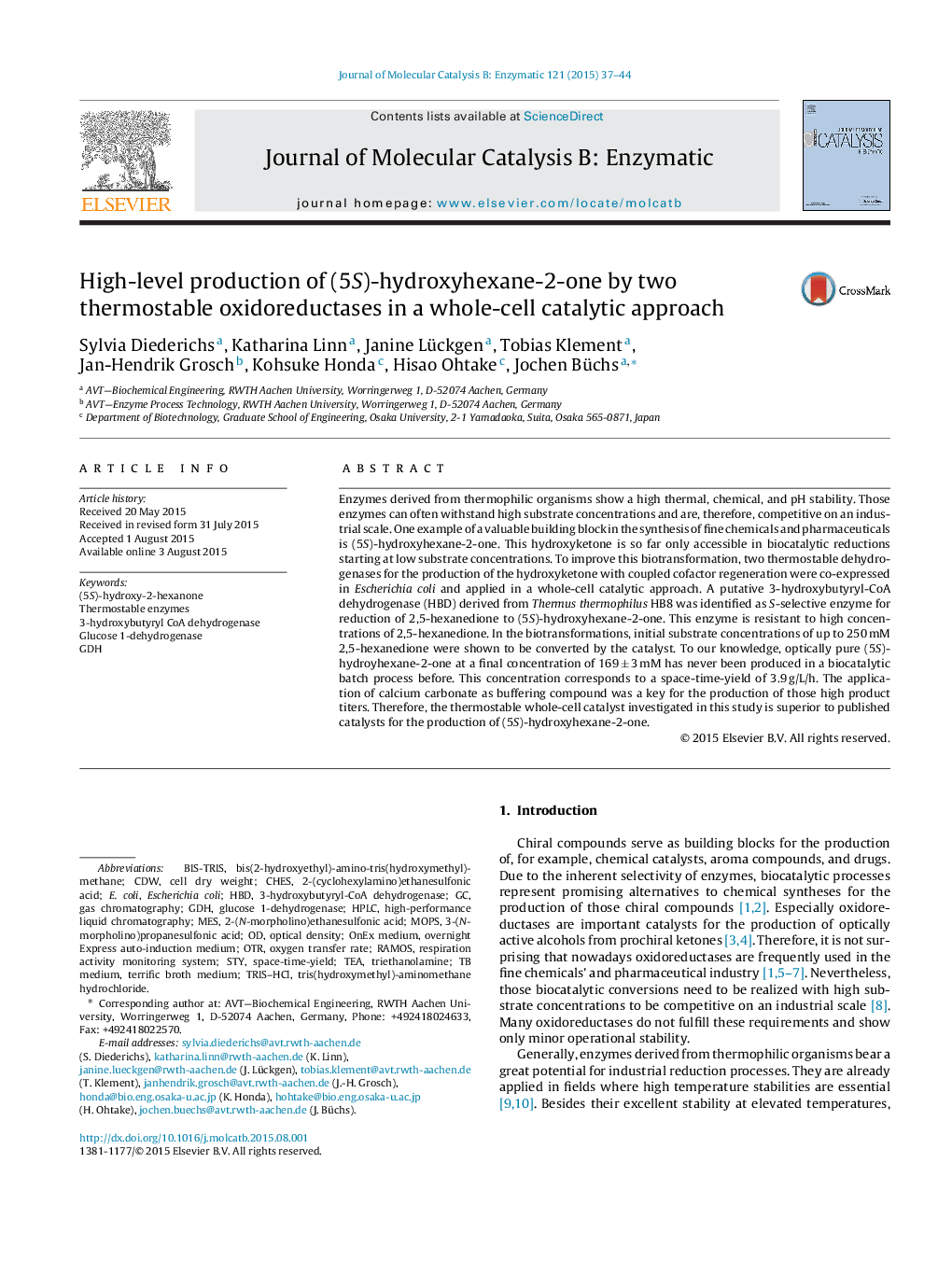| کد مقاله | کد نشریه | سال انتشار | مقاله انگلیسی | نسخه تمام متن |
|---|---|---|---|---|
| 69472 | 48771 | 2015 | 8 صفحه PDF | دانلود رایگان |

• Production of (5S)-hydroxyhexane-2-one with thermostable enzymes investigated.
• HBD identified as S-selective enzyme withstanding high substrate concentrations.
• Production of optically pure (5S)-hydroxyhexane-2-one at a final concentration of 169 ± 3 mM.
• Thermostable whole-cell catalyst superior to published catalysts.
Enzymes derived from thermophilic organisms show a high thermal, chemical, and pH stability. Those enzymes can often withstand high substrate concentrations and are, therefore, competitive on an industrial scale. One example of a valuable building block in the synthesis of fine chemicals and pharmaceuticals is (5S)-hydroxyhexane-2-one. This hydroxyketone is so far only accessible in biocatalytic reductions starting at low substrate concentrations. To improve this biotransformation, two thermostable dehydrogenases for the production of the hydroxyketone with coupled cofactor regeneration were co-expressed in Escherichia coli and applied in a whole-cell catalytic approach. A putative 3-hydroxybutyryl-CoA dehydrogenase (HBD) derived from Thermus thermophilus HB8 was identified as S-selective enzyme for reduction of 2,5-hexanedione to (5S)-hydroxyhexane-2-one. This enzyme is resistant to high concentrations of 2,5-hexanedione. In the biotransformations, initial substrate concentrations of up to 250 mM 2,5-hexanedione were shown to be converted by the catalyst. To our knowledge, optically pure (5S)-hydroyhexane-2-one at a final concentration of 169 ± 3 mM has never been produced in a biocatalytic batch process before. This concentration corresponds to a space-time-yield of 3.9 g/L/h. The application of calcium carbonate as buffering compound was a key for the production of those high product titers. Therefore, the thermostable whole-cell catalyst investigated in this study is superior to published catalysts for the production of (5S)-hydroxyhexane-2-one.
Figure optionsDownload as PowerPoint slide
Journal: Journal of Molecular Catalysis B: Enzymatic - Volume 121, November 2015, Pages 37–44